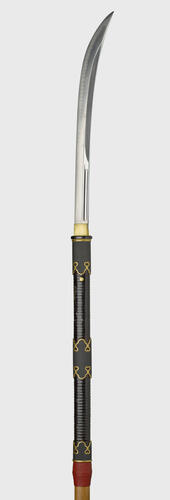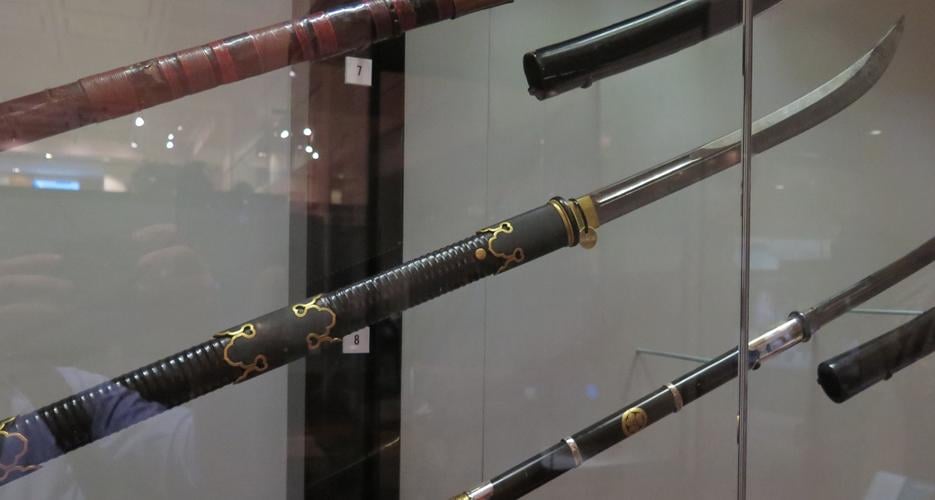-
1 of 253523 objects
Polearm (naginata) 1850-60
Steel, lacquered wood, shakudō, gold, mother-of-pearl | 230.0 x 5.3 x 3.8 cm (whole object) | RCIN 71616

Fujiwara Yasutsugu (active 1860)
Polearm (naginata) 1850-60

Fujiwara Yasutsugu (active 1860)
Polearm (naginata) 1850-60


-
Among the most significant events of the middle Kamakura period (1185–1333) were the unsuccessful Mongol invasions of Japan in 1274 and 1281. The Japanese cavalry were confounded by the Mongols’ use of massed archery, and by the hordes of Mongol infantry armed with long spears and other polearms. One consequence of these invasions was a shift in Japanese battle tactics from cavalry to infantry, together with increased production of spears (yari) and halberds (naginata).
By the Muromachi period (1392–1573), polearms had become the principal weapon of the foot soldier (ashigaru); the naginata, which was primarily for cutting, was an efficient weapon against massed ranks of infantry and against cavalry. The blades could be up to one metre long. Naginata-style blades were also sometimes mounted on shorter handles and used in a manner akin to swords.
This polearm is of the elegant type used in sankin kōtai processions to and from the shōgun’s court during the peaceful Edo period. It is one of two sent to Queen Victoria by Shōgun Tokugawa Iemochi in 1860. A translated list of the gifts to be presented, dated 21 March 1860, includes ‘Two naginata or spears.’
Text adapted from Japan: Courts and Culture (2020)Provenance
One of two naginata sent to Queen Victoria by Tokugawa Iemochi of Japan via Sir Rutherford Alcock, the first consul-general in Japan. On a translated list of gifts dated 14 July 1859, and received by Alcock on 27 September 1859, they are described as '2 naginata (crosiers)'. One naginata was sent to the Victoria and Albert Museum, London, in 1865 (M258).
A 'Treaty of Peace, Friendship and Commerce' was ratified between Queen Victoria and the Tycoon of Japan at Yedo on 11 July 1859 and presented to Parliament in 1860. -
Creator(s)
(nationality)Acquirer(s)
-
Medium and techniques
Steel, lacquered wood, shakudō, gold, mother-of-pearl
Measurements
230.0 x 5.3 x 3.8 cm (whole object)
Category
Object type(s)
Place of Production
Japan